Skykraft to begin launch of space-based air traffic management constellation
Tuesday, 10 August 2021 07:53 Skykraft will launch a 300kg satellite on SpaceX's upcoming Transporter-5 mission according to a recently signed launch contract. The 300kg satellite is a carrier for multiple early-phase Skykraft Air Traffic Management satellites that will form a global constellation of 210 satellites.
Skykraft is building a Space-based Air Traffic Management constellation to improve the safety and effici
Skykraft will launch a 300kg satellite on SpaceX's upcoming Transporter-5 mission according to a recently signed launch contract. The 300kg satellite is a carrier for multiple early-phase Skykraft Air Traffic Management satellites that will form a global constellation of 210 satellites.
Skykraft is building a Space-based Air Traffic Management constellation to improve the safety and effici Exotic matter is in our sights
Tuesday, 10 August 2021 07:53 Physicists have created a new way to observe details about the structure and composition of materials that improves upon previous methods. Conventional spectroscopy changes the frequency of light shining on a sample over time to reveal details about them. The new technique, Rabi-oscillation spectroscopy, does not need to explore a wide frequency range so can operate much more quickly. This metho
Physicists have created a new way to observe details about the structure and composition of materials that improves upon previous methods. Conventional spectroscopy changes the frequency of light shining on a sample over time to reveal details about them. The new technique, Rabi-oscillation spectroscopy, does not need to explore a wide frequency range so can operate much more quickly. This metho Huge rings around a black hole
Tuesday, 10 August 2021 07:53 A spectacular set of rings around a black hole has been captured using NASA's Chandra X-ray Observatory and Neil Gehrels Swift Observatory. The X-ray images of the giant rings have revealed new information about dust located in our Galaxy, using a similar principle to the X-rays performed in doctor's offices and airports.
The black hole is part of a binary system called V404 Cygni, located
A spectacular set of rings around a black hole has been captured using NASA's Chandra X-ray Observatory and Neil Gehrels Swift Observatory. The X-ray images of the giant rings have revealed new information about dust located in our Galaxy, using a similar principle to the X-rays performed in doctor's offices and airports.
The black hole is part of a binary system called V404 Cygni, located Small force, big effect: How the planets could influence the sun
Tuesday, 10 August 2021 07:53 A new theory supports the controversial hypothesis that the planets affect solar activity. It puts forward a mechanism by which the very small influence of the planets could exert its rhythm on such a large system as the Sun. If the theory is confirmed, it could possibly be used to predict solar activity more accurately. This would be of great interest, as large solar flares can cripple electron
A new theory supports the controversial hypothesis that the planets affect solar activity. It puts forward a mechanism by which the very small influence of the planets could exert its rhythm on such a large system as the Sun. If the theory is confirmed, it could possibly be used to predict solar activity more accurately. This would be of great interest, as large solar flares can cripple electron NASA's TESS tunes into an all-sky 'symphony' of red giant stars
Tuesday, 10 August 2021 07:53 Using observations from NASA's Transiting Exoplanet Survey Satellite (TESS), astronomers have identified an unprecedented collection of pulsating red giant stars all across the sky. These stars, whose rhythms arise from internal sound waves, provide the opening chords of a symphonic exploration of our galactic neighborhood.
TESS primarily hunts for worlds beyond our solar system, also know
Using observations from NASA's Transiting Exoplanet Survey Satellite (TESS), astronomers have identified an unprecedented collection of pulsating red giant stars all across the sky. These stars, whose rhythms arise from internal sound waves, provide the opening chords of a symphonic exploration of our galactic neighborhood.
TESS primarily hunts for worlds beyond our solar system, also know Thailand moving to enact Space Activities Act
Tuesday, 10 August 2021 07:04
The legislation aims to set up a National Space Policy Committee, chaired by Thailand's prime minister, to draw up the nation's space policies.
Living Planet Symposium 2022: Call for proposals
Tuesday, 10 August 2021 06:40
ESA is now accepting proposals for sessions at the next Living Planet Symposium – set to take place on 23–27 May 2022 at the World Conference Center in Bonn, Germany.
ABL, Astra, Relativity selected to compete for U.S. Space Force responsive launch contracts
Monday, 09 August 2021 22:41
ABL Space Systems Corp, Astra Space and Relativity Space will join a pool of launch providers that are eligible to compete for missions awarded under the U.S. Space Force Orbital Services Program (OSP)-4.
Simplification is key to space industry growth
Monday, 09 August 2021 20:01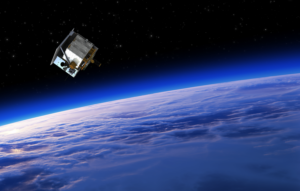
The space industry needs to significantly simplify services for customers outside the sector to unlock its next phase of growth, space executives told the Small Satellite Conference Aug. 9.
Op-ed | Congress should support rapid procurement of advanced missile warning satellites
Monday, 09 August 2021 20:00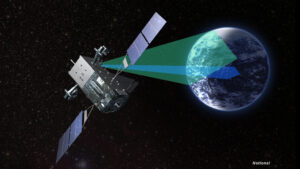
Congress should fully support the Next-Generation Overhead Persistent Infrared missile warning satellite program
In-Space Missions wins contract for British military smallsat
Monday, 09 August 2021 18:38
British smallsat developer In-Space Missions has won a contract from the U.K. Ministry of Defence to build a satellite to test optical communications.
NASA Invites Media to New OSIRIS-REx, Asteroid Bennu Study Briefing
Monday, 09 August 2021 18:18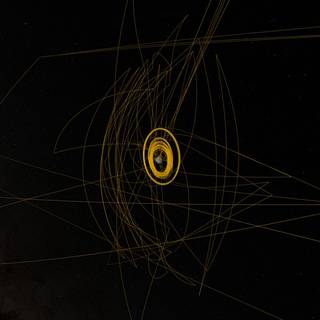 NASA will host a media teleconference at 1 p.m. EDT Wednesday, Aug. 11, to discuss an important finding from NASA’s Origins, Spectral Interpretation, Resource Identification, Security-Regolith Explorer (OSIRIS-REx) spacecraft.
NASA will host a media teleconference at 1 p.m. EDT Wednesday, Aug. 11, to discuss an important finding from NASA’s Origins, Spectral Interpretation, Resource Identification, Security-Regolith Explorer (OSIRIS-REx) spacecraft. Space Force developing “freight train to space” for smallsats
Monday, 09 August 2021 17:37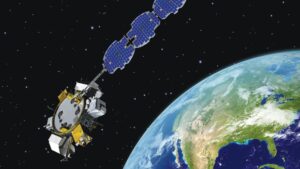
The U.S. Space Force plans to demonstrate later this year two approaches to provide rides to space for small satellites and hosted payloads, including a version of a common adapter equipped with a propulsion system.
Space ISAC invites firms to join Small Satellite Community of Interest
Monday, 09 August 2021 17:30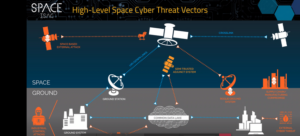
SAN FRANCISCO — The Space Information Sharing and Analysis Center, or Space ISAC, is eager to share information about cyber threats and other potential security vulnerabilities with the small satellite industry. In April the Space ISAC established a Small Satellite Community of Interest “to develop and deliver risk-mitigation strategies to members and government partners to better […]
DoD experiment flying to International Space Station to collect data for missile-tracking sensors
Monday, 09 August 2021 15:17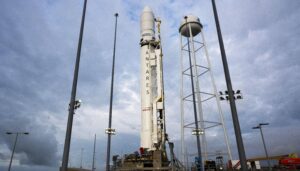
A Northrop Grumman spacecraft scheduled to launch Aug. 10 on a resupply mission to the International Space Station will carry a Space Development Agency experiment.
